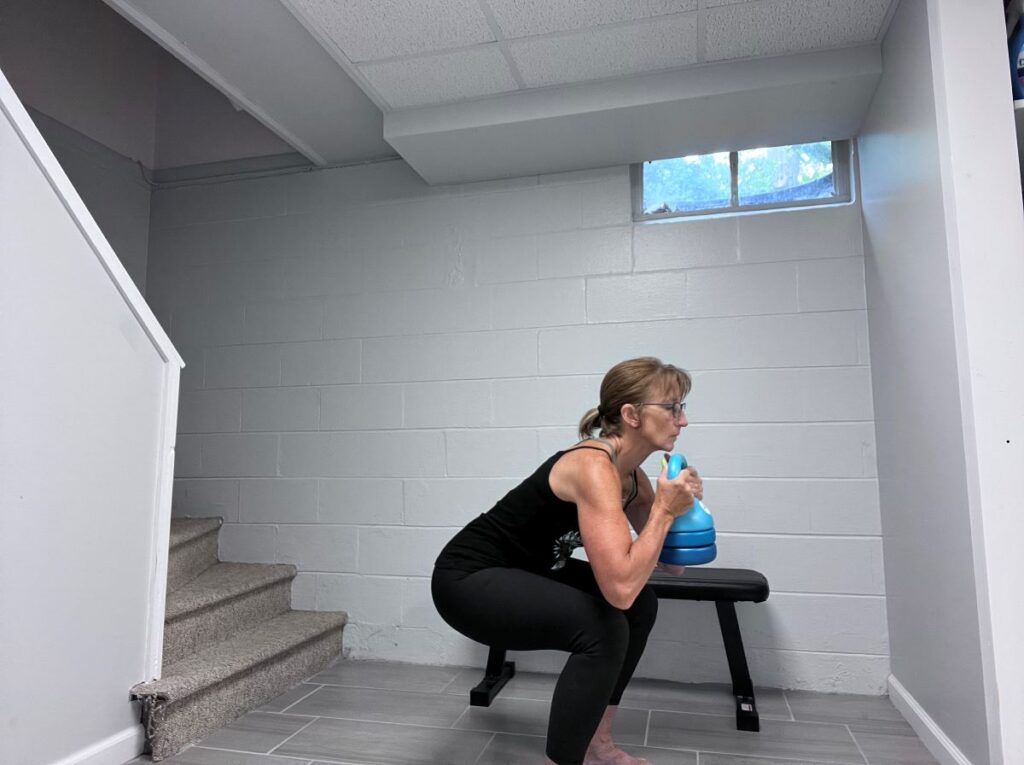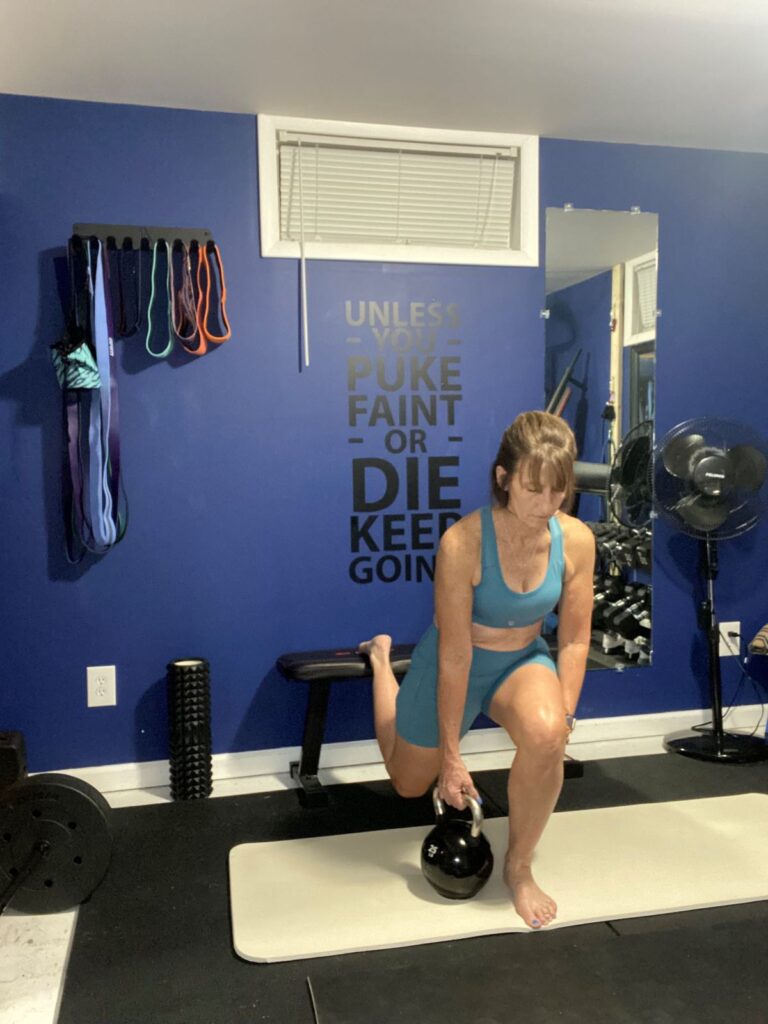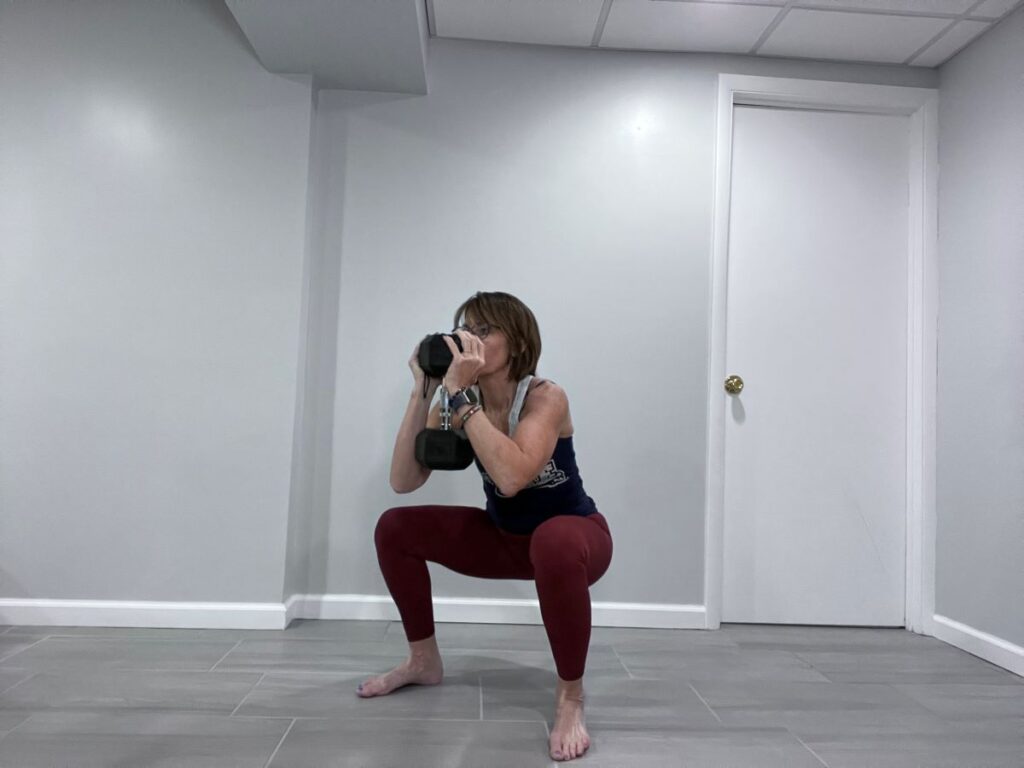Can You Do Weighted Squats After A Total Knee Replacement?
Have you had a joint replacement surgery?
If so, congratulations on taking a step towards improved health and mobility!
I was where you are not that long ago, after I had a total left knee replacement.
There were so many questions running through my head.
One of the biggest ones involved returning to weight lifting. I wanted to continue to exercise and lead a healthy lifestyle.
So, I get the struggle of finding safe exercises after total knee replacement surgery.
My main concern was whether or not I would be able to include weighted squats in my workout routine.
Why? Well, weighted squats are one of the best exercises for strengthening the lower body, but they can be a bit hard on the knees.
So, can you do weighted squats after a total knee replacement?
Well, unfortunately it’s not a straightforward “yes” or “no” answer.
There are several factors to consider, like your overall health, any physical limitations, and your recovery progress.
Everyone’s recovery and progress is unique.
I can tell you that for most people, including weighted squats in their exercise routine after knee replacement surgery is possible – and actually encouraged.
However, it’s crucial to take extra precautions to protect that new knee of yours.
That’s why it’s super important to have a chat with your surgeon, physical therapist, or athletic trainer before you get started.
Talk about your goals and discuss any potential risks.
Trust me, it’s worth it!
In this article I am going to share some invaluable tips and tricks that I’ve learned from research and my own knee replacement experience.
Together, we’ll ace this recovery journey!

Things You Need to Know Before Your Total Knee Replacement
Total knee replacement, also known as a total knee arthroplasty, is when your worn-out knee is replaced with an artificial knee made of metal, plastic, or ceramic.
The recovery from a knee arthroscopy is different for everyone, but generally, it takes a few weeks to a few months to get back on your feet.
Although it will not feel like it – physical therapy will be your best friend during this time.
It will help you rebuild strength and regain mobility in your new knee joint.
So, what about exercise?
Always remember to follow your healthcare provider and physical therapist’s advice.
Even though weighted squats can do wonders for your lower body, they might not be good for everyone who’s had a total knee replacement.
You will want to start slow, with low-impact exercises like walking, cycling, or swimming to gradually build up strength and flexibility.
These activities will be encouraged while you’re in a physical therapy program.
As you progress, your physical therapist may recommend adding more challenging lower body exercises like squats and then weighted squats.
Remember, the key to a successful recovery after a total knee replacement is to listen to your body, your orthopedic surgeon and your physical therapist.
With some patience and dedication, you should regain the strength and mobility in your knee joint and get back to the active lifestyle you love.
Recovery Process After Your Knee Replacement
You will want to take things slow at first because pain and swelling are a real thing and moving too fast can make this worse.
Pain and swelling can slow down your progress or cause issues with your new knee.
Use ice often!
When ready, your doctor will recommend a physical therapy program.
Do not miss your therapy sessions and be an active participant.
I’m not gonna lie, therapy will hurt but don’t skip it no matter how bad you don’t want to go!
You could be in a structured physical therapy program for 4-8 weeks depending on your progress.
I personally did 6 weeks of physical therapy, but again this may be different for you.
You may be done sooner, or you may need more therapy than me and that’s okay.
Physical therapy will immediately focus on body weight exercises in order to get the flexion and extension of your knee back.
This is very important in order to advance to strengthening.
Be sure to discuss any concerns with your physical therapist, they can help with tips on pain and swelling – so make sure to ask questions.
Getting your motion back within the first 6 weeks is imperative to getting back to your fitness routine.
You will also be given a home exercise program.
This is very important so don’t avoid doing your home exercises!
They will be very uncomfortable at first, but you will be glad that you did them.
Your physical therapist will begin to add half squats, wall squats, chair squats and leg presses to your program.
When you are able, they will then begin adding light weights.
You will slowly progress and transition to doing just a home exercise program with the help of your therapist.
So, suck it up and listen to your physical therapist.
Just remember, like with any workout plan, push yourself when you need to and slow down when your body tells you to – you will want to be smart and listen to your body.
Don’t do too much at first just slowly transition and progress as you can tolerate.
The Pros and Cons of Weighted Squats After a Knee Replacement
After a total knee replacement, squats can have both benefits and drawbacks.

Benefits of Weighted Squats
1. Muscle Strengthening
Squats help strengthen the muscles around the knee, such as the quads and hamstrings – as well as the glutes and hips.
These muscles can weaken after surgery and extended periods of inactivity.
By including weighted squats into your workout routine, you can rebuild and strengthen those muscles.
2. Improved Balance
Balance and stability become very important after a knee replacement.
Performing weighted squats requires both, which allows you to improve your balance and lowers your risk of falls.
3. Increased Range of Motion
Weighted squats can contribute to increasing the range of motion in your knee joint.
You may want to begin with a partial squat and then progress to a full squat.
Slowly increase the depth of your squats, and you’ll notice improvements in knee mobility over time.
4. Confidence Boost
Regaining confidence in physical activities is also important post-surgery.
Gradually challenging yourself with heavier weights and deeper squats will build strength and endurance, helping you feel more confident in your everyday tasks.
Disadvantages of Doing Weighted Squats
1. Over Stretching the Joint
Improper technique can cause overstretching of the joint.
This can put an increased strain on your new knee, leading to loosening or instability in the knee joint.
As you can see there are more advantages than disadvantages to returning to weighted squats.
If you practice proper form – weighted squats can be a great exercise after a full knee replacement surgery.
Starting with Weighted Squats After A TKR
Knowing your personal fitness level or limitations for doing squats after a total knee replacement is key to staying safe while reaping the benefits of this exercise.
In general, adding low weight (under 10 pounds) is usually advised.
Begin with different squat positions such as half squats and full squats.
These can be done as a basic chair, wall or air squat, while focusing on form over speed and quantity.
After a total knee replacement, you will also need to limit how far you squat.
It’s best not to squat down lower than parallel with your knees aka a deep squat.
My orthopedic surgeon instructed me not to squat more than 90 degrees – he stated that this could cause issues for the new joint.
The days of deep squats will probably be a thing of the past for you.
As you build strength and your range of motion improves, you can begin to increase your weights in small increments.
Start with low weights and slowly increase your reps.
Once you are comfortable with lighter weights and higher reps, you can slowly increase your weights.
It’s important to listen to your body and pay attention to any pain or discomfort while in your squat position.
If you feel any sudden or long-lasting pains, immediately stop and consult with a physical therapist or orthopedic surgeon about possible modifications or alternatives.
You may even consider getting a personal trainer for a few months after you’re released from a physical therapy program.
Utilize Proper Technique When Doing Weighted Squats Post-Surgery

Utilizing the correct form is essential for avoiding injury when doing any exercise—especially squats after a total knee replacement.
During a weighted squat, you will need to use muscles in both the lower and upper body to remain steady.
When beginning a squat, maintain your balance throughout the movement by lightly pressing down on your knees to lock them into an outwardly bent position.
Do not let your knees collapse inward.
Try to keep your back straight and lower slowly with control.
You can start with partial squats or a full bodyweight squat.
Using a count of two seconds on the way down, pause at the bottom and then press through your heels as you slowly push yourself up to standing, continuing a two second count on the way up.
Make sure your shoulders are level, and try to limit how much your feet turn out as you do each squat.
Try to do a parallel squat when you are ready, but avoid doing a deep squat.
Squatting lower than 90 degrees or knee level with your booty can cause loosening of the new knee.
Remember that it’s quality over quantity, so be sure not to go too heavy too quickly and don’t race through the squats.
Take breaks if you need them.
Monitor Muscle Tightness or Soreness After Performing Weighted Squats
Weighted squats can be beneficial for people who have had total knee replacement surgery.
Performing weighted squats can help improve quadriceps and glute strength while also helping to build muscle and increase flexibility.
However, it’s important that you pay close attention to how your body feels after performing squats to ensure that you don’t cause any damage to your affected knee.
Weighted squats should be done slowly, with good form and techniques.
Start with a minimal weight load at first, then progress over time as you become stronger.
If you begin to experience tightness or soreness in the joints, stop the exercise immediately, rest, and contact your doctor for further advice.
Alternative Exercises and Activities
It may be challenging for some knee replacement patients to perform weighted squats due to knee stability.
However, there are several alternative knee replacement exercises and activities that you can do to strengthen your legs and improve your overall fitness.
- Leg Press: The leg press machine is an excellent alternative to squats. It targets the same muscles as squats but with less pressure on the knees. Start with a light weight and gradually increase as you build strength.
- Lunges: Lunges are another great exercise that targets the quadriceps, hamstrings, and glutes. You can do walking lunges or stationary lunges, and you can add weights as you progress.
- Cycling: Cycling is a low-impact exercise that is gentle on the knees. It’s an excellent way to improve cardiovascular fitness and strengthen the legs. Start with a stationary bike and gradually move to an outdoor bike as you build strength.
- Swimming: Swimming is another low-impact exercise that is easy on the knees. It’s an excellent way to improve overall fitness and strengthen the legs. You can swim laps or participate in water aerobics.
- Yoga: Yoga is a great way to improve flexibility, balance, and strength. There are many yoga poses that can help with knee strength, such as Warrior II, Chair Pose, and Tree Pose.
Remember to always consult with your doctor or physical therapist before starting any exercise program after a total knee replacement. They can help you determine which exercises are safe and effective for you.
In Conclusion
Weighted squats using dumbbells, barbells, or kettlebells can be a great way to improve strength and increase the range of motion in the knee after a total knee replacement.
Just make sure to start light on those weights until you’ve regained your balance, stability, and mobility.
Additionally, pay extra attention to your form, since improper technique could cause strain or stress on your already recovering knee.
You should always keep proper body alignment throughout the movement when doing these exercises to avoid injury.
It may take a few months to get strong enough to do heavy-weight squats, but if you keep pushing yourself safely, you will be back at it before you know it.
